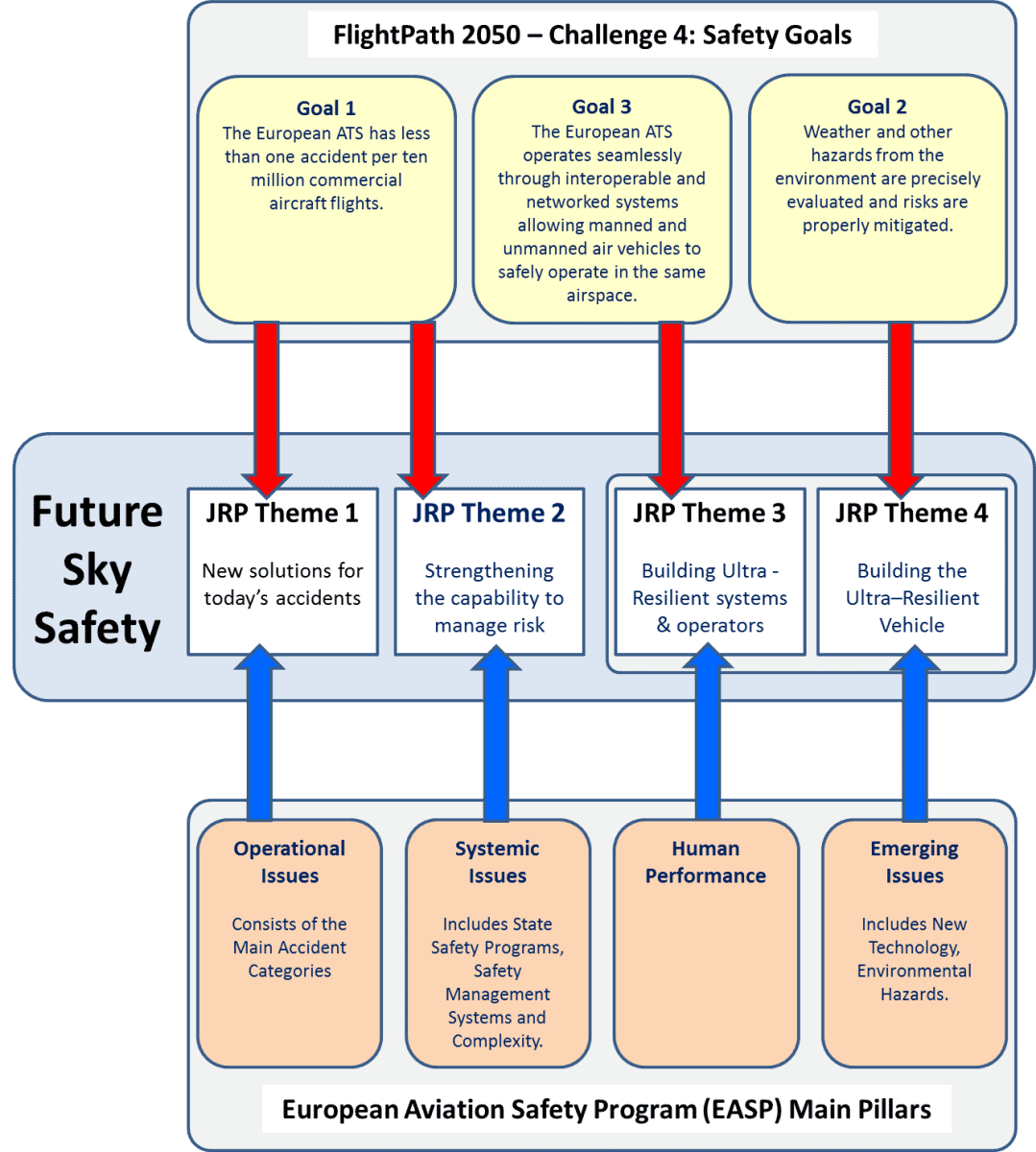The main reasons to have a joint research programme on safety are:
- Safety is a transverse domain of common interest to all stakeholders and with reduced competitive aspects;
- Safety is closely linked to key research and test infrastructures that are operated by EREA members;
- Aspects such as aviation safety policy/regulation/certification have an EU dimension, hence it is clear that a JRP on safety will have European added value;
- A JRP on safety could help to overcome some “regulatory barriers” for introduction of innovative products, technologies, systems, and processes, and thus help innovation;
- Trends in safety performance over the last decade indicate that the ACARE safety goal of an 80% reduction of the accident rate is not being achieved. A stronger focus on safety is needed. This requires research in which safety improvement is the specific purpose (not a secondary benefit).
Activities under the Joint Research Programme
The Joint Research Programme on Safety will focus on two main streams of activities:
- Coordination of institutional safety research programmes
The national research establishments participating in the programme will coordinate the safety research executed under their national institutional research programmes. The set-up of new institutional programmes will be coordinated, national results will be shared amongst the establishments, the hiring of PhDs will be coordinated, etc.
- Collaborative safety research
Gaps in safety research that remain even after the coordinated effort of the research establishments will be tackled in this second part of the programme where the research establishments will cooperate with universities, industry, SMEs and airlines.
The Research Coordination Program under activity 1 will for the first time bring the safety research of the European Research Establishment under coordination to maximize efficiency, to develop critical mass, and to ensure excellent alignment with the relevant safety agenda’s in Europe. This coordination program will among others deliver an annual Safety Research Agenda that will also be shared with the main European stakeholders. The set of safety institutionally funded research projects will be driven by the Safety Research Agenda and will complement the (nine) collaborative safety research projects under activity 2, thus providing a strong leverage effect of the European Commission funded part of the JRP.
The Joint Research Programme on Safety will be open and in coordination with EASA, IMG4, SESAR Joint Undertaking, EUROCONTROL and ongoing projects.


